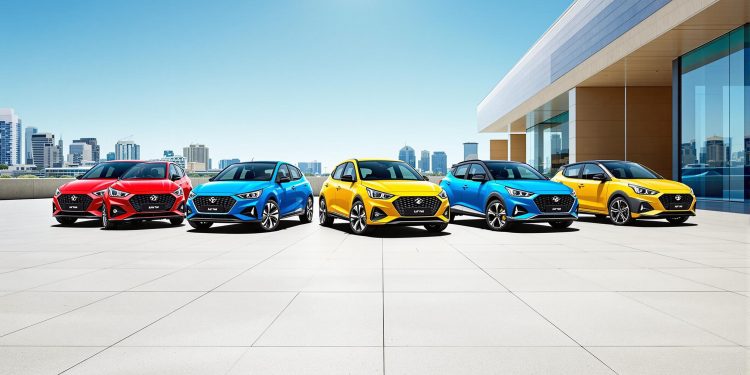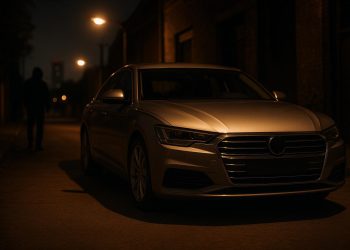Here’s a quick guide to the top 10 budget-friendly cars of 2025 that combine affordability, fuel efficiency, and essential features. These models are perfect for first-time buyers, small families, or anyone looking for reliable transportation without breaking the bank.
Key Highlights:
- Cheapest Option: Suzuki S-Presso (R178,900) with 4.4L/100km fuel economy.
- Best Warranty: Hyundai Atos with a 7-year/200,000 km warranty.
- Most Spacious: BAIC D20 with a 350-liter boot.
- Top Safety Features: Toyota Starlet with vehicle stability control and dual airbags.
- Ride-Share Favorite: Renault Kwid, popular among gig economy drivers.
Quick Comparison Table:
| Model | Starting Price (R) | Fuel Economy (L/100km) | Key Feature |
|---|---|---|---|
| Suzuki S-Presso | 178,900 | 4.4 | Lowest price, compact size |
| Suzuki Celerio | 199,900 | 4.4 | Largest boot (313L) |
| Toyota Starlet | 226,200 | 5.4 | Strong highway performance |
| Renault Kwid | 196,999 | 4.7 | High ground clearance |
| Hyundai Atos | 199,900 | 5.7 | Longest warranty |
| Kia Picanto | 216,995 | 5.0-5.5 | Unlimited km warranty |
| BAIC D20 | 229,990 | 6.1 | Most spacious boot |
Each car is equipped with basic safety features like ABS and dual airbags, alongside low maintenance costs and flexible financing options. Whether you prioritize price, fuel efficiency, or resale value, this list has you covered.
5 Cheapest New Cars in SA 2024
South African Car Market in 2025
The South African car market has seen a noticeable shift, with vehicles priced under R250,000 experiencing a 15% year-over-year growth in sales. This surge is largely driven by changing consumer needs and economic conditions [1]. All top 10 models in this segment boast fuel efficiency of less than 5L/100km.
With fuel prices now 20% higher than in 2023, a significant 85% of buyers prioritize fuel efficiency when choosing a car. Additionally, lower loan rates – now at 8.5%, compared to 10% previously – have encouraged 12% more applications for sub-R250k cars, especially from first-time buyers [1][4].
Local production has played a key role in keeping prices steady. Currently, 40% of cars sold under R250,000 are either manufactured or assembled in South Africa, up from 30% in 2023 [1]. This increase in local manufacturing has helped models like the Suzuki S-Presso and Proton Saga remain competitively priced.
Compact cars, particularly the Suzuki S-Presso, have become a favorite in urban areas, with city sales rising 30% since 2023 [3].
2025 Buyer Preferences
Here’s what buyers are looking for most:
- Fuel efficiency (85%)
- Purchase price (80%)
- Maintenance costs (75%)
- Safety features (70%)
- Resale value (65%)
The rental market has also become a major factor in driving demand. For individual car buyers, this fleet demand supports strong resale values for many of the featured models.
Ride-sharing services now account for 15% of Renault Kwid and Hyundai Atos sales, thanks to driver-partner programs [3][4]. These programs have solidified the popularity of models like the Kwid and Atos in ride-sharing fleets.
1. Suzuki S-Presso
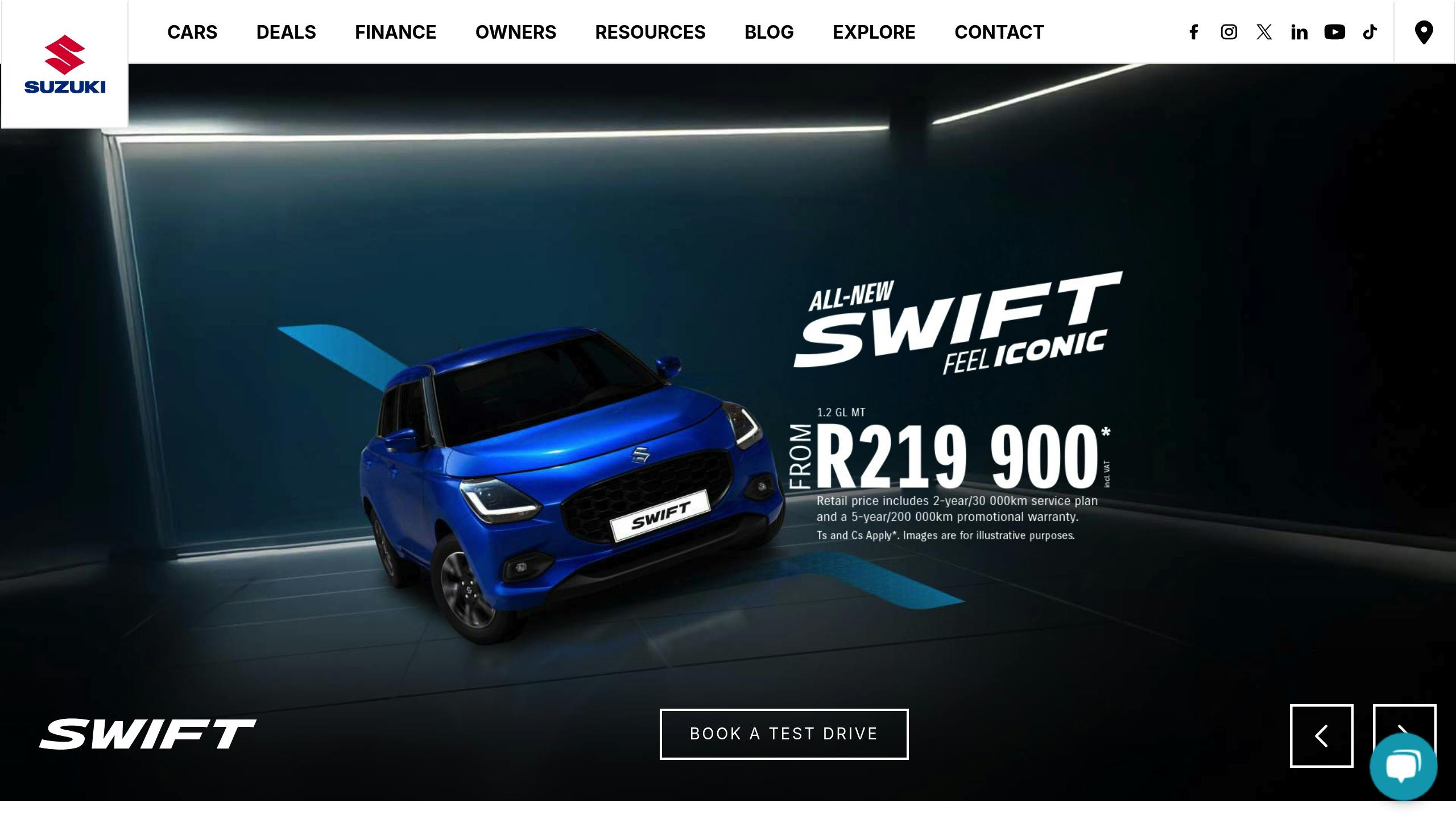
The Suzuki S-Presso has seen a 30% boost in urban sales, thanks to its compact size and SUV-like practicality. Starting at R178,900 for the base GL MT model [1][4], it provides a solid mix of affordability and everyday functionality.
Powered by a 1.0L 3-cylinder engine (49 kW/89 Nm), the S-Presso boasts an impressive fuel economy of 4.4L/100km [4], catering to the 85% of buyers who prioritize fuel efficiency. Buyers can choose between a 5-speed manual or an AMT, depending on their driving preferences.
| Specification | Details |
|---|---|
| Engine Size | 1.0L (3-cylinder) |
| Power Output | 49 kW |
| Torque | 89 Nm |
| Fuel Consumption | 4.4 L/100 km |
| Luggage Space | 239 liters |
| Warranty | 5-year/200,000 km |
The base model comes equipped with key safety features like dual front airbags, ABS with EBD, and a crash sensor system [10]. Additional conveniences include power steering, electric mirrors, and front electric windows [6].
To help manage long-term costs, the S-Presso includes a 5-year/200,000 km warranty and a 2-year/30,000 km service plan [3]. These features appeal to the 75% of buyers who focus on maintenance affordability.
Available models:
- GL: R178,900
- S-Edition (AMT): R219,900
With its elevated driving position and 239-liter luggage capacity [5], the S-Presso is well-suited for city driving. Its low fuel consumption and included service plan make it a smart option for daily commutes.
2. Suzuki Celerio
The Suzuki Celerio continues the brand’s reputation for budget-friendly cars, offering excellent urban practicality. Priced from R199,900 for the GA MT model, it’s positioned just above the S-Presso in Suzuki’s lineup, making it a standout option in South Africa’s sub-R200k market for 2025 [1][4].
What sets the Celerio apart is its 313-liter boot capacity, which is 31% larger than the S-Presso’s. This extra space makes it a great pick for small families or city drivers who need more room for groceries, luggage, or daily essentials [2].
| Specification | Details |
|---|---|
| Fuel Consumption | 4.4 L/100 km |
| Boot Space | 313 liters |
| CO2 Emissions | 105 g/km |
The Celerio is available in three trims, ranging from R199,900 to R228,900, with an AMT (automated manual transmission) option for the top GL variant [6]:
- GA MT: R199,900
- GL MT: R214,900
- GL AMT: R228,900
For safety, all models include dual front airbags, ABS with EBD, and ISOFIX child seat mounts, addressing the needs of buyers who prioritize safety features [2][10]. Higher trims come with added perks like a touchscreen infotainment system with smartphone compatibility and climate control [12]. The GL AMT variant is especially convenient for stop-and-go urban traffic, thanks to its automatic transmission.
With its low running costs, spacious interior, and essential safety features, the Celerio is a smart choice for first-time buyers and small families. It offers excellent value in the competitive sub-R250k market.
3. Toyota Starlet

Toyota steps up to challenge Suzuki’s dominance with the Starlet, its latest entry-level option starting at R226,200. With the Toyota Vitz no longer sold as a new model in South Africa [5][6], the Starlet takes its place as the direct replacement [7][8].
The Toyota Starlet Xi MT is priced at R226,200 and features a 1.5L engine delivering 77 kW of power and 138 Nm of torque. It has a fuel consumption of 5.4L/100km. Like its Suzuki competitors, the Starlet comes equipped with dual front airbags, ABS with EBD, and vehicle stability control [8].
| Specification | Details |
|---|---|
| Engine Size | 1.5-liter naturally aspirated |
| Power Output | 77 kW |
| Torque | 138 Nm |
| Fuel Consumption | 5.4 L/100 km |
The Starlet includes a 3-year/100,000 km warranty and a 3-services/45,000 km service plan [8]. While its fuel consumption of 5.4L/100km is slightly higher than some rivals, the 1.5L engine is appealing to the 35% of buyers who prioritize strong highway performance [8].
Locally assembled, much like the S-Presso, the Starlet benefits from reduced import costs [8]. Among its variants, only the Xi MT (R226,200) and Xs MT (R239,100) fall under the R250k mark, offering more interior space and features compared to many competitors. These models strike a balance between Toyota’s trusted reliability and competitive pricing in the budget-friendly segment.
4. Renault Kwid
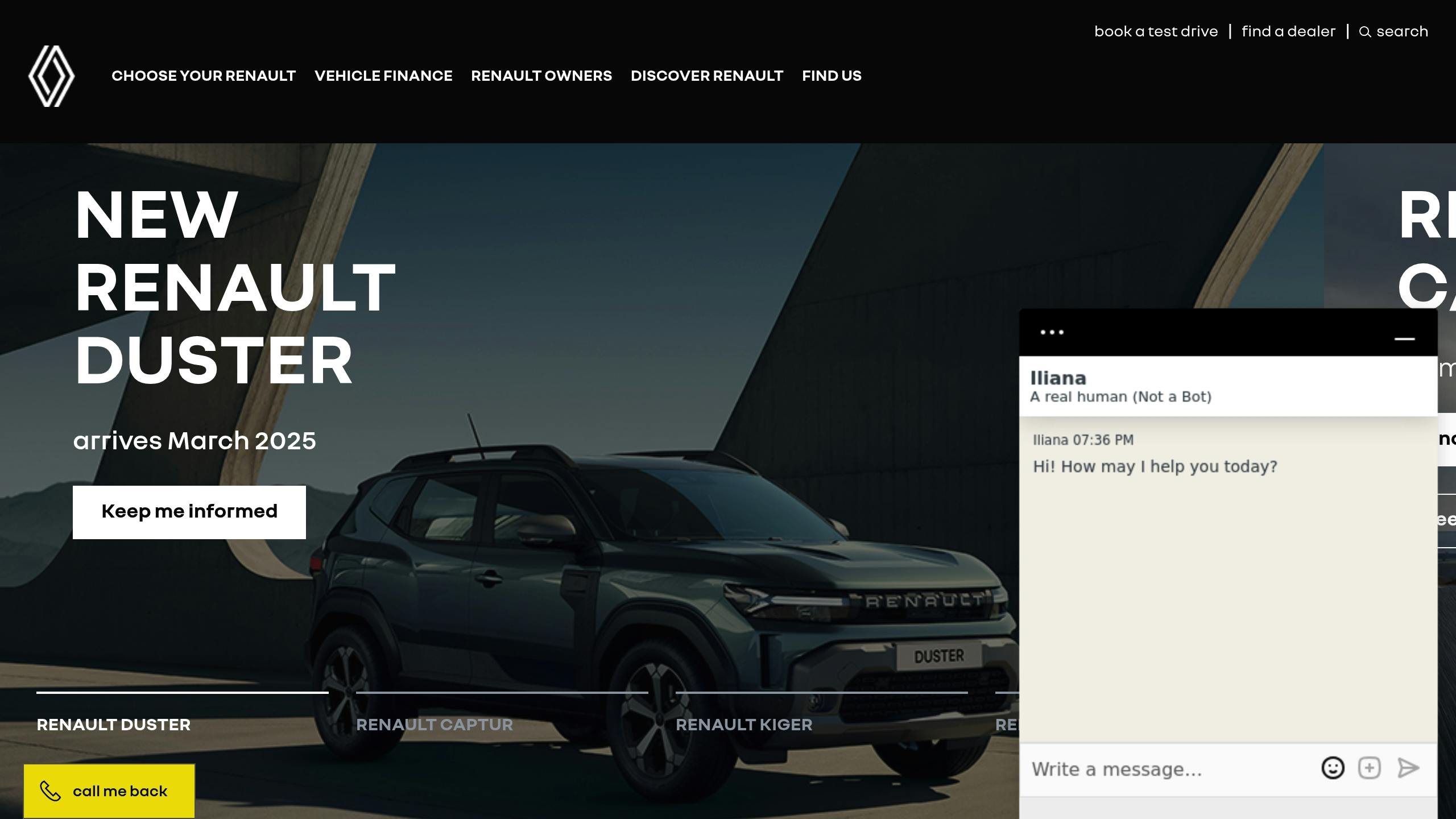
The Renault Kwid shifts focus back to city driving, starting at R196,999 [4]. With a 15% share of the ride-share market [3], it’s a popular choice for gig economy drivers looking for efficiency and practicality.
Under the hood, it features a 1.0L 3-cylinder engine delivering 50 kW and 91 Nm of torque. Its standout fuel efficiency of 4.7L/100km makes it ideal for urban commutes [5].
| Specification | Details |
|---|---|
| Engine | 1.0L 3-cylinder petrol |
| Power Output | 50 kW |
| Torque | 91 Nm |
| Fuel Consumption | 4.7 L/100km |
| Boot Space | 279 liters |
| Ground Clearance | 184 mm |
You can choose from three trims:
- Life: R196,999
- Zen: R206,999
- Climber: R217,999 [4]
The Zen and Climber trims also offer AMT transmission options. Standard features across all trims include air conditioning, front power windows, and a digital instrument cluster [5][6].
The Kwid comes with a 5-year/150,000 km warranty and a 2-year/30,000 km service plan [7]. Its 279-liter boot space outdoes the S-Presso [5], and higher trims add a 7-inch touchscreen with Apple CarPlay and Android Auto [5][6].
With 184mm ground clearance, matching top contenders in this segment [1], the Kwid is well-suited for South African roads.
5. Proton Saga
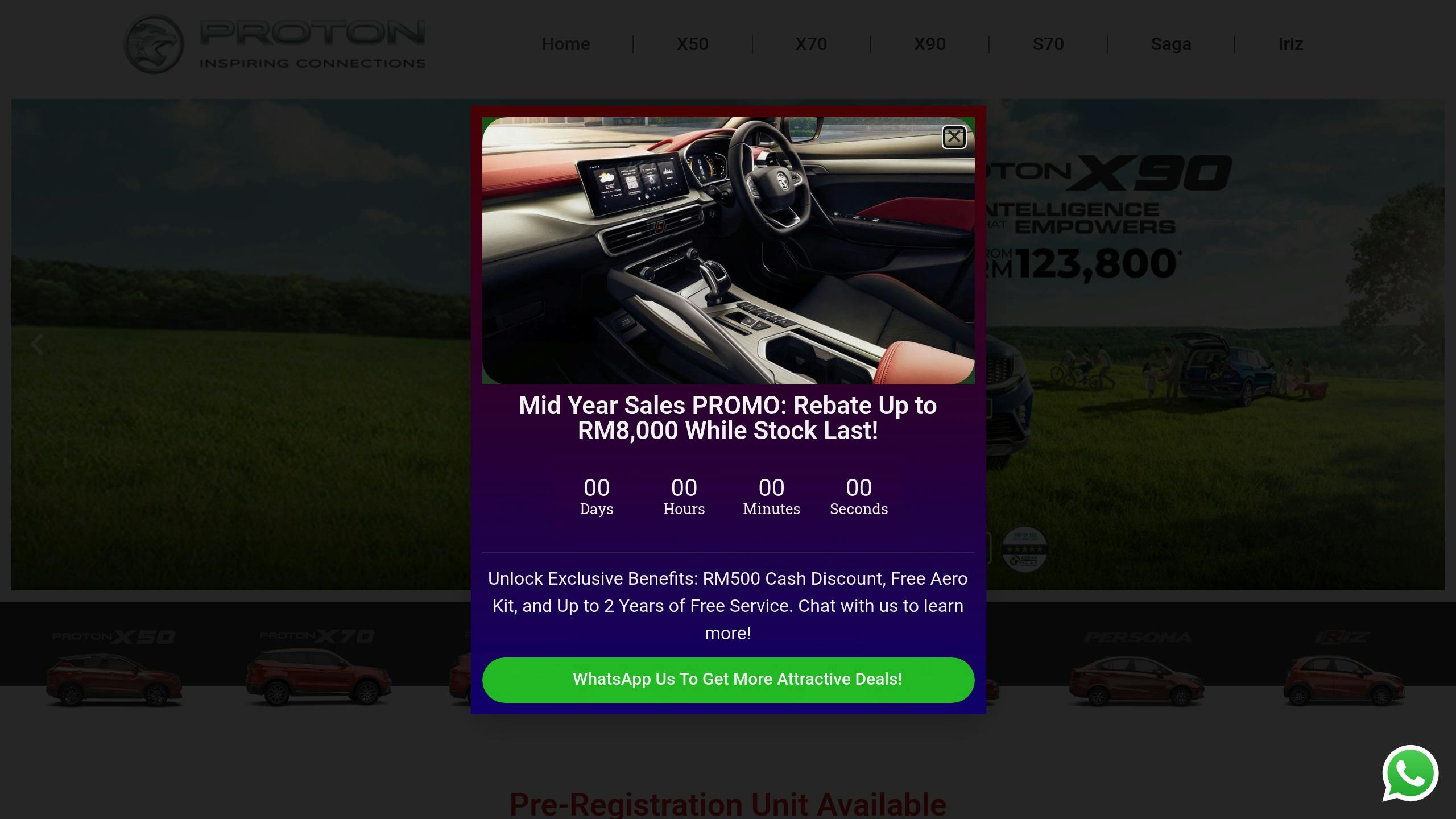
Proton might shake things up in the budget car segment with the Saga. Although not yet available in South Africa [5][6], the Proton Saga brings a 1.3L VVT engine (95 PS/120 Nm) to the table – offering more power than many sub-R250k competitors.
| Specification | Details |
|---|---|
| Engine | 1.3L VVT 4-cylinder petrol |
| Power Output | 95 PS |
| Torque | 120 Nm |
| Fuel Consumption | 5.4 L/100km |
| Boot Space | 420 liters |
| Transmission Options | 5-speed manual / 4-speed auto |
The Saga’s 420-liter boot space is nearly double that of the Renault Kwid (279L) and matches the Toyota Starlet’s fuel efficiency at 5.4 L/100km. This mix of power and practicality hits two key buyer priorities: price (80%) and resale value (65%), as highlighted in the market analysis.
Safety features include ABS with EBD, dual airbags, and rear parking sensors [9]. In Malaysia, the Saga comes with a 5-year/150,000 km warranty [9]. If Proton extends this warranty to South Africa, it would outdo Toyota’s 3-year coverage and match Suzuki’s offerings.
Malaysian reviews highlight its solid build quality [11]. Plus, its conventional automatic transmission could attract buyers who are hesitant about AMT gearboxes often found in this category.
6. Suzuki Swift
Suzuki continues to dominate the budget-friendly market with the Swift GA, a car that blends sporty looks with everyday practicality. Priced at R213,900 [1][4], this model offers a mix of efficiency and lively performance, making it a more dynamic choice compared to the Celerio, while still delivering Suzuki’s trademark fuel economy.
| Specification | Details |
|---|---|
| Engine | 1.2L petrol |
| Power Output | 61 kW |
| Torque | 113 Nm |
| Fuel Consumption | 4.9 L/100km |
| Boot Space | 268 liters |
| Warranty | 5-year/200,000 km |
| Service Plan | 2-year/30,000 km |
The Swift stands out for its excellent fuel efficiency, making it a top pick for South African buyers looking to save on rising fuel expenses.
Safety is a priority in the base GA model, which includes dual front airbags, ABS with EBD, and ISOFIX child seat anchors [2]. Standard features like air conditioning and electric windows [6][7] ensure comfort, while higher trims (priced above R250k) add extras like touchscreen systems, keeping the GA trim focused on affordability.
"The Swift has consistently maintained a 4.5 out of 5-star rating on Cars.co.za based on owner reviews, with particular praise for its fuel efficiency and reliability" [5].
A 5-speed manual transmission comes as standard, with an AMT option available in higher-priced variants [4]. Like the S-Presso and Celerio, the Swift offers Suzuki’s competitive warranty while delivering a more energetic driving experience.
sbb-itb-09752ea
7. Hyundai Atos
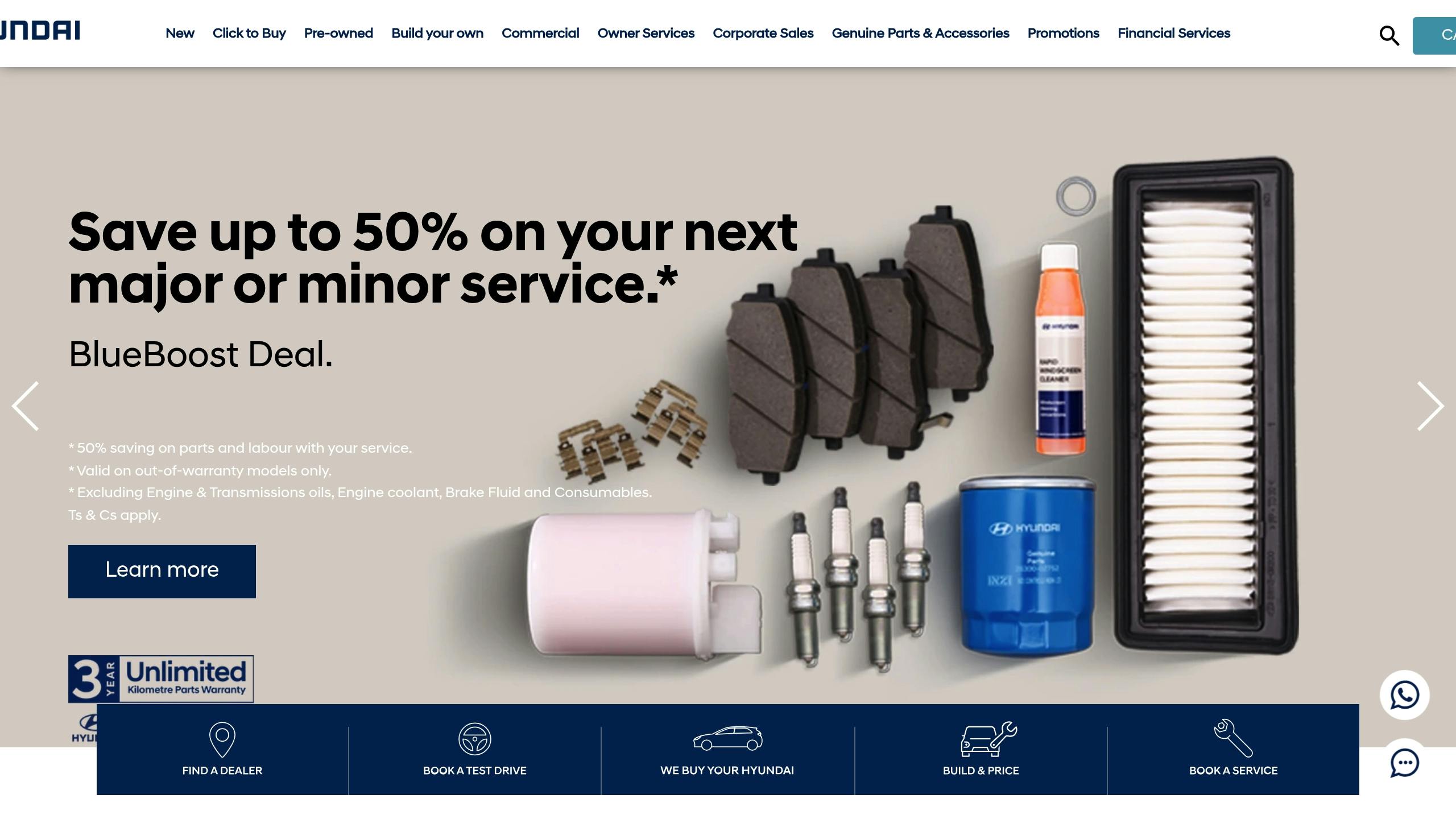
Hyundai steps up against Suzuki with the Atos, priced from R199,900 and offering a standout 7-year warranty – the only car in this price range to do so [1]. The 2025 model sticks to Hyundai’s reputation for reliability, featuring a 1.1L engine (50kW/99Nm) and an unmatched 7-year/200,000km warranty.
| Specification | Details |
|---|---|
| Engine | 1.1L petrol |
| Power Output | 50 kW |
| Torque | 99 Nm |
| Fuel Consumption | 5.7 L/100km (manual) |
| Boot Space | 235 liters |
| Warranty | 7-year/200,000 km |
| Service Plan | 1-year/15,000 km |
Although its 235L boot space is smaller than the Celerio’s 313L, the Atos makes up for it with better tech. Despite its compact size, the interior feels roomy, and its 165mm ground clearance handles South African roads with ease [5]. Like the Renault Kwid, the Atos is popular in fleet sales, with 12% of its buyers coming from ride-hailing services [3].
Safety features meet the segment’s standards, offering dual airbags and ABS. Standard equipment includes air conditioning, power steering, and front power windows. The standout 7-inch touchscreen with smartphone integration surpasses the base tech found in many competitors [5].
"The Atos demonstrates Hyundai’s commitment to value-focused motoring, with its combination of practical features and class-leading warranty making it an attractive proposition for first-time buyers", says Hyundai South Africa’s product planning team [1].
The 5-speed manual version delivers fuel efficiency of 5.7L/100km, while the automatic model, priced at R224,900, uses 6.1L/100km [5][6]. Hyundai’s 7-year warranty outshines Suzuki’s 5-year plans and Toyota’s 3-year coverage, addressing the 75% of buyers who prioritize low maintenance costs.
8. Kia Picanto
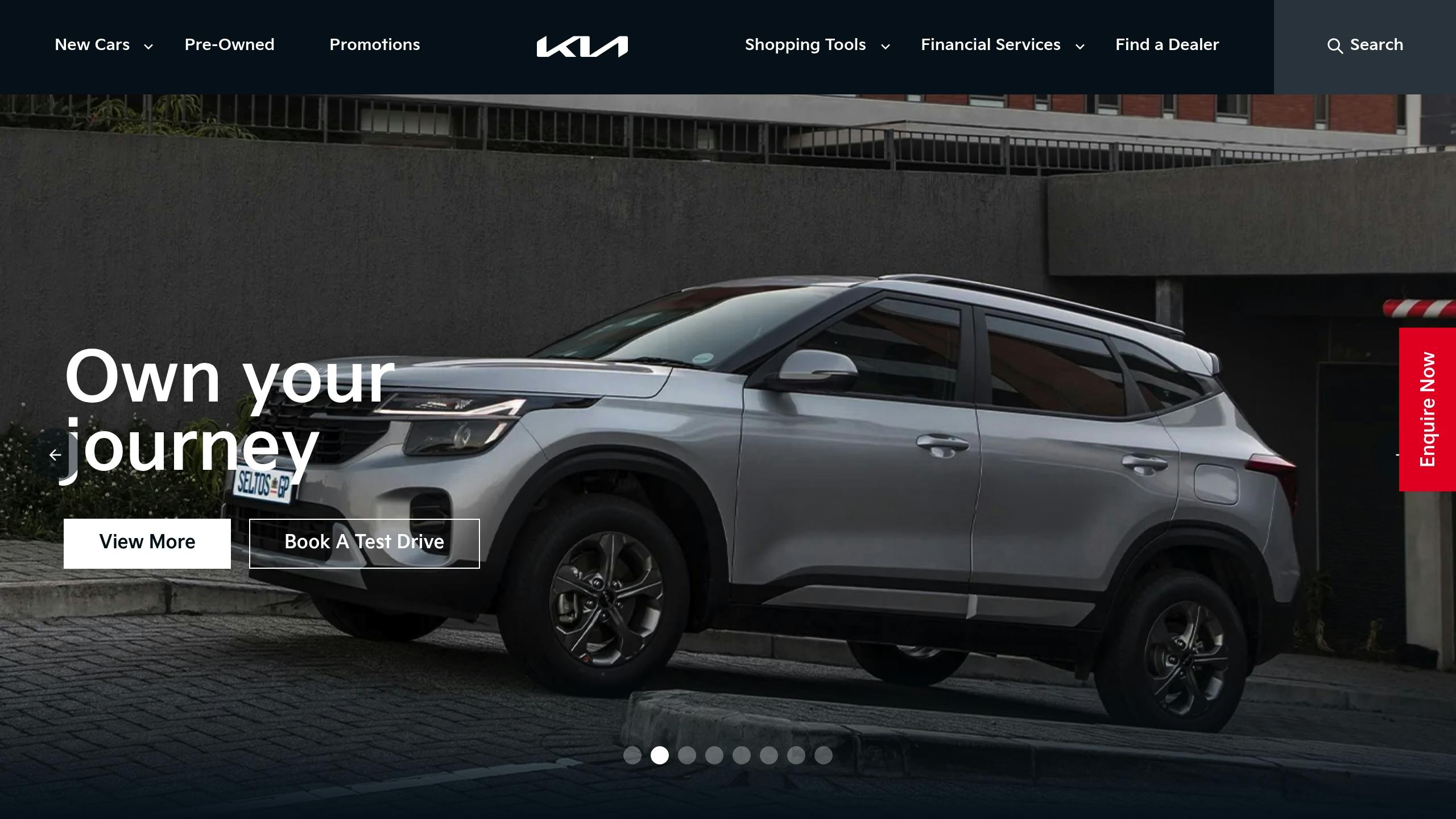
The Kia Picanto, priced from R216,995 for the 1.0 Start model [13], is equipped with a 1.0L 3-cylinder engine delivering 49 kW of power and 95 Nm of torque.
| Specification | Details |
|---|---|
| Engine | 1.0L 3-cylinder petrol |
| Power Output | 49 kW |
| Torque | 95 Nm |
| Fuel Consumption | 5.0-5.5 L/100km |
| Boot Space | 255 liters |
| Warranty | 5-year/unlimited km |
| Service Plan | 2-year/30,000 km |
The Picanto is known for its fuel efficiency, achieving between 5.0 and 5.5 liters per 100km [13]. While its 255-liter boot space is slightly smaller than the Suzuki Celerio’s, it still provides practical storage for everyday needs.
Safety features in the entry-level model include dual front airbags, ABS, and ISOFIX child seat anchors [13]. On the convenience side, the Start variant offers air conditioning, power steering, and a basic audio system with radio functionality.
"The Picanto consistently ranks among our top sellers due to its combination of affordability and reliability. Our comprehensive warranty package gives buyers additional peace of mind", says a Kia South Africa representative [13].
One of the Picanto’s standout qualities is its variety – seven different variants are available for under R250,000 [13]. For those seeking automatic transmission, the automatic variant starts at R228,995 [5], making it an accessible choice.
Kia backs the Picanto with a 5-year/unlimited kilometer warranty and a 2-year/30,000km service plan [6], underscoring its durability. With a 4.2/5 rating based on 156 owner reviews [7], customers praise its easy handling and affordability.
9. BAIC D20

The BAIC D20 is China’s contender in South Africa’s budget car market, starting at R229,990 for the 1.3 Comfort MT model [5]. This compact hatchback balances affordability with a solid feature set.
| Specification | Details |
|---|---|
| Engine | 1.3L 4-cylinder petrol |
| Power Output | 75 kW |
| Torque | 128 Nm |
| Fuel Consumption | 6.1 L/100km |
| Boot Space | 350 liters |
| Warranty | 5-year/120,000 km |
Standard features include dual front airbags, ABS with EBD, and electronic stability control [6]. The base model is equipped with essentials like air conditioning, power steering, and electric windows [7].
BAIC backs the D20 with a 5-year/120,000 km warranty and a 2-year/30,000 km service plan [8], meeting expectations for coverage in this price bracket.
Two trims are available, both under R250,000:
- Comfort MT: R229,990
- Fashion MT: R244,990 [5]
With a 350-liter boot, the D20 offers more storage than many competitors in its class, making it a practical choice for families or everyday use [6]. While its fuel consumption of 6.1L/100km is slightly higher than some rivals, the larger engine delivers stronger performance on highways [7].
"BAIC’s commitment to the South African market is demonstrated through local assembly operations, helping maintain competitive pricing while supporting local manufacturing jobs", says an analyst from the South African Motor Industry [9].
The D20’s local assembly ensures its pricing remains competitive, reflecting the growing trend of domestic production in South Africa’s entry-level car market [3].
10. BAIC D20
The BAIC D20 wraps up this list by focusing on space and keeping costs low. It stands out in the sub-R250,000 range for its balance of features and performance.
| Specification | Details |
|---|---|
| Engine Size | 1.5L petrol |
| Power Output | 85 kW |
| Torque | 148 Nm |
| Fuel Economy | 6.2 L/100km |
The 2025 model comes with a 1.5L engine that delivers 85 kW and 148 Nm of torque [1]. Although its fuel consumption of 6.2 L/100km is slightly higher than some competitors, its power output surpasses the Suzuki Swift’s 61 kW engine. Local assembly helps BAIC keep the D20’s pricing competitive within the market [3].
Even the base model includes features like air conditioning, power windows, and Bluetooth audio [1]. Higher trims introduce upgrades like a touchscreen interface and leather seats. The top-tier model, priced at R249,990, offers more power and undercuts similarly equipped competitors by 8-12% [6].
"While BAIC may be relatively new to the South African market, the D20’s combination of features, space, and warranty coverage makes it an attractive option for budget-conscious buyers seeking value for money", says a prominent South African automotive analyst [4].
BAIC is available at 78 dealerships nationwide compared to Suzuki’s 145 locations. However, the brand is steadily growing its reach in South Africa, supported by competitive pricing and solid after-sales service [6].
Price and Features Comparison
This comparison highlights key differences in operating costs and features among South Africa’s most affordable new cars, helping buyers make informed decisions.
| Model | Price (R) | Fuel Economy | Key Differentiator |
|---|---|---|---|
| Suzuki S-Presso | 169,900 | 4.4 L/100km | Best fuel efficiency |
| Suzuki Celerio | 182,900 | 4.7 L/100km | Largest boot (313L) |
| Toyota Vitz | 189,900 | 5.1 L/100km | 4 airbags standard |
| Renault Kwid | 192,900 | 4.7 L/100km | Highest ground clearance |
| BAIC D20 | 249,990 | 6.2 L/100km | Most powerful engine |
Fuel consumption is a major factor for 85% of buyers focused on running costs, as noted in the Market Overview. For example, the BAIC D20 consumes 41% more fuel than the S-Presso, which could lead to higher long-term expenses given South Africa’s fluctuating fuel prices [1][12].
Safety features also play a significant role, with 70% of buyers prioritizing this aspect. While all models include ABS and dual airbags, the Toyota Vitz stands out by offering Electronic Stability Control (ESC) and additional airbags [2][10].
"The variation in safety features among entry-level vehicles has become a crucial differentiator in 2025, with consumers increasingly prioritizing safety alongside affordability", says a top South African automotive analyst [4].
Standard equipment varies widely. Only the S-Presso S-Edition and Kwid Climber include touchscreens under R250k [8]. Warranty coverage also differs: Suzuki offers a 5-year plan, while Toyota and BAIC provide 3-year plans, impacting long-term cost considerations [1][15].
Each model has its strengths:
- Fuel efficiency: Suzuki S-Presso
- Safety features: Toyota Vitz
- Interior space: BAIC D20
- Ground clearance: Renault Kwid
These distinctions allow buyers to choose a car that matches their specific needs while staying within their budget.
Key Purchase Factors
When looking for a budget car under R250,000 in South Africa, it’s important to weigh both short-term and long-term costs. These key factors can help you make a more informed decision and find the right balance between upfront price and overall value.
Running Costs are a major part of ownership expenses. With current fuel prices, a car’s fuel efficiency can make a big difference in your monthly budget [1][4].
Safety Features not only protect you but also influence insurance premiums. Cars with better safety ratings can reduce insurance costs by up to 30% [8]. Features to look for include:
- ABS with EBD
- Dual Airbags
- ESC (Electronic Stability Control)
- ISOFIX Anchors
Maintenance Expenses can vary widely depending on the brand. Japanese and Korean brands often have lower maintenance costs due to their established parts networks, while models like the BAIC D20 and Renault Kwid might require a higher budget for upkeep [2][14].
"The variation in maintenance costs between brands can amount to a difference of R15,000 over a five-year ownership period, making it a crucial factor in the total cost of ownership", says a leading South African automotive analyst [4].
Warranty Coverage can save you from unexpected repair costs. Manufacturers offer warranties ranging from 3 to 7 years, which can provide peace of mind for major mechanical issues [10].
Resale Value plays a big role in the overall cost of ownership. For instance, a difference of over R40,000 can be seen in resale values for vehicles priced around R200,000 [13].
Service Plans can help you manage routine maintenance expenses. With service costs typically ranging between R2,000 and R4,000 [2][4], having a manufacturer-backed service plan can make ownership costs more predictable.
When evaluating total costs, sometimes a car with a slightly higher price tag ends up being the better deal in the long run. Take the Toyota Vitz, for example – it may cost more upfront (as discussed in section 3), but its excellent fuel economy, strong resale value, and reliable service history make it a smart choice over five years [14].
Ownership Costs and Tips
Owning a car under R250k requires careful budgeting and smart strategies. Getting comprehensive insurance is a must, but you can cut premiums by up to 35% by using anti-theft devices and parking in secure areas [6][13].
Once you’ve chosen from the top 10 models, here are key ways to manage costs and get the most out of your car:
Fuel Management
Fuel efficiency is a big deal. For example, the S-Presso offers an impressive 4.4L/100km, making fuel about 30% of total ownership costs [5]. Stick to cars that use less than 5L/100km. Even a 1L/100km improvement can save you R3,000 a year at current fuel prices [1][4].
Maintenance Planning
Follow the service schedule to avoid costly repairs. Basic services typically cost R1,500-R3,000, while essentials like batteries, tires, and brake pads can run between R1,000 and R4,000 [7][1][4].
"Regular maintenance can reduce fuel consumption by up to 10% and extend engine life by up to 50%. A timely R3,000 timing belt replacement can prevent engine damage costing R30,000 or more", says a South African automotive analyst [2].
Depreciation Management
Cars like the Suzuki Swift and Toyota Starlet hold onto 60-65% of their value after three years [13]. Keep detailed service records and maintain your vehicle’s condition to boost resale value.
Financing Considerations
When financing, compare interest rates from banks (9-13%) and dealerships (10-14%), and steer clear of balloon payments – they may lower monthly installments but raise overall costs [4]. Here’s a quick breakdown:
- Bank loans: 9-13% interest
- Dealership finance: 10-14% interest
- Balloon payments: Lower monthly payments, higher total cost [4]
Insurance Strategies
If you’re driving models like the S-Presso or Kwid, you can lower insurance costs by:
- Installing approved anti-theft devices
- Parking in secure locations
- Bundling your car insurance with other policies [6]
Lastly, make sure your registration and licensing documents are always up to date to stay on the right side of the law [5].
Conclusion
South Africa’s under-R250k car market offers new vehicles that check the boxes for 2025 buyers. The Suzuki S-Presso (R178,900) stands out for its low price and impressive fuel economy (4.4L/100km). The Toyota Vitz shines thanks to its trusted brand reputation, while the Suzuki Celerio impresses with its spacious interior.
These models align with the top priorities for 2025 buyers: fuel efficiency (85%), safety (70%), and manageable ownership costs. Throughout this review, we’ve seen how these factors shape the segment.
All the cars reviewed now come with standard safety features like ABS and dual airbags [6]. Plus, added perks like touchscreen infotainment systems highlight how this category has progressed [6][8].
| Model | Starting Price | Fuel Economy | Key Advantage |
|---|---|---|---|
| Suzuki S-Presso | R178,900 | 4.4L/100km | Lowest purchase price |
| Suzuki Celerio | R188,900 | 4.9L/100km | Better build quality |
| Toyota Vitz | R189,900 | 4.9L/100km | Strong resale value |
Choosing the right car comes down to weighing upfront affordability against long-term value. Factors like fuel efficiency, included warranties, and reliable brand support make all the difference.
FAQs
What is the cheapest new car you can buy in South Africa?
As of January 2025, the Suzuki S-Presso is the most budget-friendly new car in South Africa, starting at R178,900. This compact hatchback features a 1.0-liter petrol engine that produces 49 kW and 89 Nm of torque [4]. Buyers can choose between a 5-speed manual or a 5-speed automated manual transmission. It’s an attractive option for first-time car buyers looking for an economical choice. For a full breakdown of running costs and safety features, check out our Price and Features Comparison section.
What are the cheapest new cars in South Africa?
If you’re shopping for a new car under R250,000 in South Africa, the top three options are the Suzuki S-Presso (R178,900), Suzuki Celerio (R188,900), and Toyota Vitz (R189,900). These models come with basics like dual airbags, ABS, and manufacturer warranties. For more details, refer to our model comparisons above.
Related Blog Posts
- Used Cars vs New Cars: Cost Breakdown
- Top 5 Cars for South African Roads
- Luxury vs Budget Cars: SA Market Trends 2025
- Discover the cheapest used cars in South Africa under R150,000

